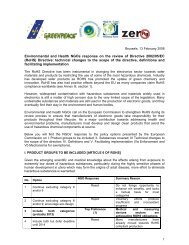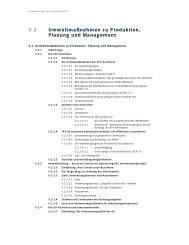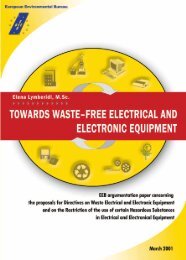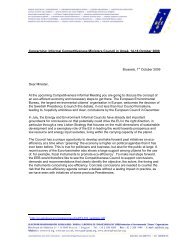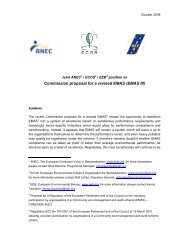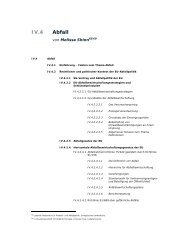Eu Mercury phase out in Measuring and Control Equipment - EEB
Eu Mercury phase out in Measuring and Control Equipment - EEB
Eu Mercury phase out in Measuring and Control Equipment - EEB
You also want an ePaper? Increase the reach of your titles
YUMPU automatically turns print PDFs into web optimized ePapers that Google loves.
REPORT FROM THE CONFERENCE “EU MERCURY PHASE OUT IN MEASURING AND CONTROL EQUIPMENT”• COCIR/Philips added that for all the automated devices the st<strong>and</strong>ard requires human cl<strong>in</strong>icaltest<strong>in</strong>g (ab<strong>out</strong> 85 patients with spread <strong>out</strong> arm size, gender, weight <strong>and</strong> such). You mustcompare that result to an auscultation. We are (the st<strong>and</strong>ard is) silent if that is done with acolumn of mercury or an aneroid but very clearly, the further you get away from the primarymeasurement the more error there is. But all automated sphygmomanometers are required to becl<strong>in</strong>ically validated <strong>and</strong> if you claim special patient populations (e.g. pregnant women,children) then we (the st<strong>and</strong>ard) expect that validation to be done <strong>in</strong> the special patientpopulation as well as the general population.• COCIR/Philips also commented that remov<strong>in</strong>g mercury, for <strong>in</strong>stance from thermometers forcl<strong>in</strong>ical use, is an appropriate th<strong>in</strong>g to do because that is a direct measurement. It is a staticmeasurement <strong>and</strong> it can be done adequately electronically as well.COCIR/Philips re-iterated that a sphygmomanometer does not measure blood pressure. It isestimat<strong>in</strong>g blood pressure us<strong>in</strong>g a method that has been around s<strong>in</strong>ce the 1890s (with somemodifications over time). The difficulty is that our treatment protocols are based upon thatestimation. If we had 40-year <strong>out</strong>come studies us<strong>in</strong>g someth<strong>in</strong>g else then we could use thatother means of estimat<strong>in</strong>g blood pressure <strong>and</strong> know what to do. Thus, the difficulty here is acorrelation between what happens <strong>in</strong> human health - over a long period of time <strong>and</strong> over a widevariety of population – <strong>and</strong> estimate of this physical parameter.• Welch Allyn commented that some digital pressure meters are 10-times more accurate than thetypical mercury column. These digital pressure meters are generally used <strong>in</strong> manufactur<strong>in</strong>g <strong>and</strong>calibration of sphygmomanometers. <strong>Mercury</strong> sphygmomanometers that are commonlyavailable are specified +/- 3 millimeters of mercury as are our most auscultatory devices. Sothey are both equally accurate if properly ma<strong>in</strong>ta<strong>in</strong>ed.However, COCIR/Philips commented that neither is good enough based upon the <strong>out</strong>comesresearch. And for the aneroid that is a static comparison <strong>and</strong> no published research appears toexist show<strong>in</strong>g that cl<strong>in</strong>icians get the same answer with a good aneroid that they get with a goodmov<strong>in</strong>g column. It would be <strong>in</strong>terest<strong>in</strong>g to look at the dynamic difference as well as the staticdifference. Most of the research has been <strong>in</strong> the meteorology lab mak<strong>in</strong>g static measurements.Unfortunately that is not what systolic <strong>and</strong> diastolic blood pressure estimation is all ab<strong>out</strong>.• Welch Allyn observed that the sphygmomanometer is just one part of a “system” to obta<strong>in</strong>auscultatory blood pressure read<strong>in</strong>gs. The sphygmomanometer is the (1) pressure sensor, <strong>and</strong>you also need a (2) blood pressure cuff to occlude the artery, a (3) stethoscope to pick upKorotkoff sounds, <strong>and</strong> lastly, a (4) well-tra<strong>in</strong>ed human be<strong>in</strong>g to ensure proper technique hasbeen observed, to <strong>in</strong>terpret the Korotkoff sounds, <strong>and</strong> determ<strong>in</strong>e systolic <strong>and</strong> diastolic pressure.From the four major components of this system, the greatest source of error by far is techniquerelated – human error. Consider the argument that mercury sphygmomanometers cannot beab<strong>and</strong>oned due to their historic role <strong>in</strong> cl<strong>in</strong>ical studies <strong>and</strong> the potential to make historic datacomparisons difficult. The argument appears more emotional than scientific when youunderst<strong>and</strong> that mercury <strong>and</strong> aneroid sphygmomanometers are both equally accurate (+/- 3 mmHg), <strong>and</strong> as pressure meters are just one part of a system (<strong>in</strong>clud<strong>in</strong>g the cuff, stethoscope,auscultatory technique, etc.). The evolution of blood-pressure cuff design/siz<strong>in</strong>g <strong>and</strong> bloodpressuretechnique have had a much larger impact on historically-comparable blood pressureread<strong>in</strong>gs than the pressure meters themselves.COCIR/Philips added that the source of error is the patient because their pressure is vary<strong>in</strong>gover time <strong>and</strong> agreed with the assessment above made by Welch Allyn.20



